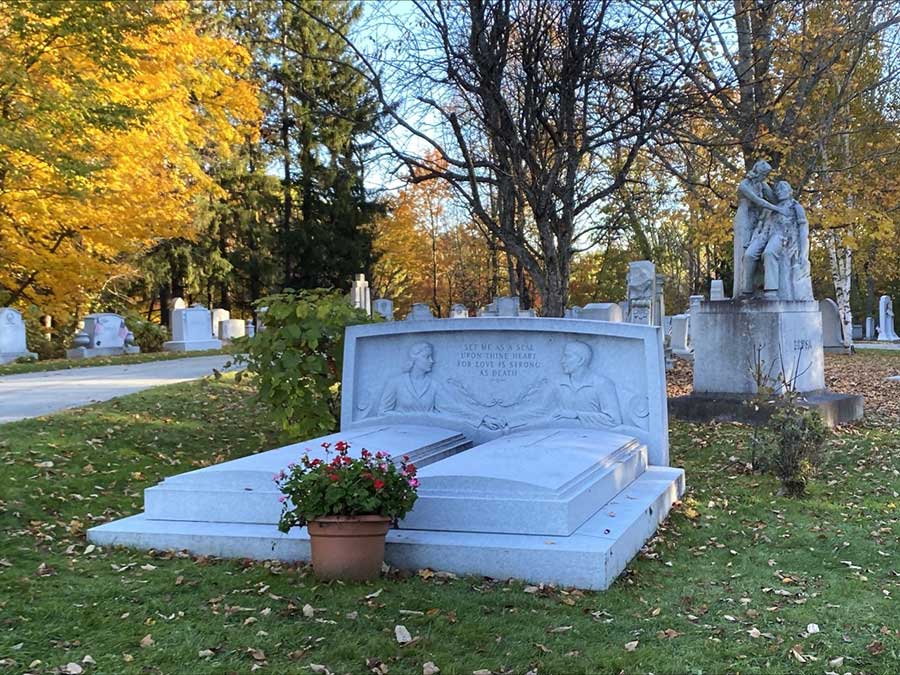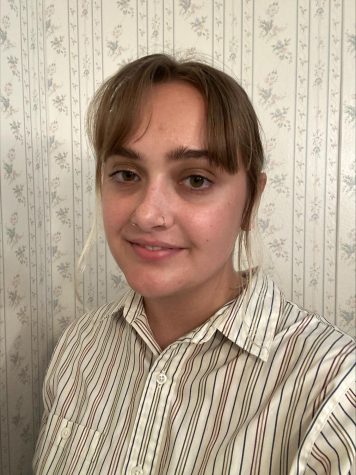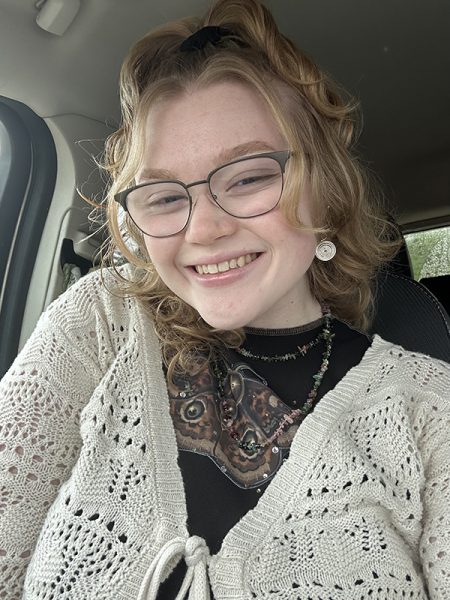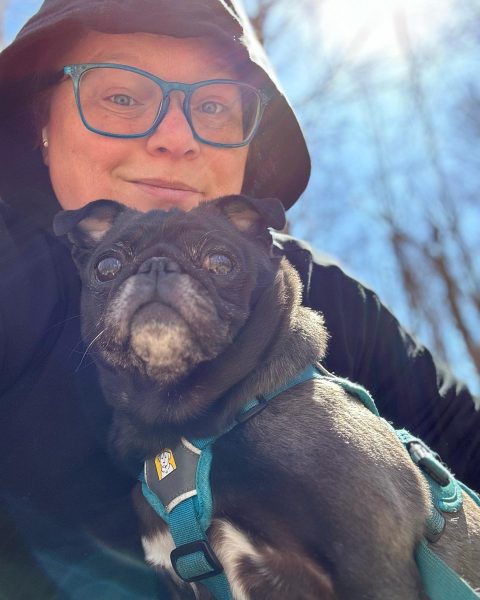Where there’s death, there’s Hope
Upon a bed of stone, two lovers lie, eternally conversing, unbeknownst to human eyes. What a slab of granite once was is now a memory cemented in time. For decades, these two lovers have been admiring one another, while the locals and leaf peepers alike take notice to the craftsmanship of our Barre granite stonecutters. The biblical verse, “Set me as a seal upon thine heart for love is strong as death,” is carved between the stone replica of William and Gwendolyn Halvosa.
Hope Cemetery is located in Barre, Vermont, the previously self-proclaimed, “Granite Capital of the World.” The original 53-acre cemetery was designed by landscape architect Edward P. Adams, and established in 1895, right at the beginning of the city’s granite boom. The cemetery, located just above downtown Barre, has become a staple of Vermont tourism.
More closely related to a museum, the cemetery draws in tourism for the thematic approaches to stonecutting displayed within. While Hope has an abundance of towering obelisks and melancholic angels, it is also home to headstones of a more obscure variety: A soccer ball, a race car, amd a plane, to name a few. Most names are Italian, remembrance of the 20th-century immigrants who came to Barre to show their craft and participate in its granite industry.
Of the more unusual monuments are the twin pyramids that sit side-by-side on the corner of two connecting roads within the cemetery. Although affiliated with the burial sites of ancient Egypt, these pyramids are not the final resting places of their makers. Rather they were designed to leave the message of a Mr. Roman and his wife. Each of the four sides of both pyramids are full of bible scripture that are partial to the couple. They wanted to immortalize the message within the verses on granite as it lasts for hundreds of years.
Like our stone-cut couple, many headstones pay homage to the folks buried below. A life-sized carving of Elia Corti is displayed above his resting place, carved on a single piece of granite by his brother. Directly behind the Halvosa’s grave lies an immortalized man on his death bed, held by whom we assume to be his wife, though local legend tells another story; it was another woman whom he may or may not have had an affair with. Luigi Giovanni Brusa, known commonly as Louis, was an Italian-born granite sculptor who died of silicosis at the age of 51 in 1937. Louis wanted his grave to serve as a warning to the lasting effects of working in a granite shed and had his friend, fellow stonecutter Don Colletti, carve his headstone.
Silicosis is a respiratory disease that caused a high death rate among Barre stone cutters due to the excess amounts of granite dust they were breathing in. Originally misdiagnosed as Tuberculosis, silicosis is the aftermath of microscopic granite shards being lodged into the lungs of these men. Many of them knew that death was lingering and would partake in the morbid act of carving their own headstones. Sadly, granite sheds in Barre didn’t have ventilation until the mid-1930s, unlike their open-aired counterparts in Italy that many immigrant sculptors were used to.
Another Brusa buried in Hope is Louis’s own mother, Maria. The Bored Angel sits between two granite pillars, which sit between two urn-like sculptures. Her glaring eyes gaze off to the side, as she ponders her absurdity among the sullen faces of the angelic company around her. The angel’s wings drape down her back, feathered stone giving dimension to her otherwise human qualities. Her chin rests in the palm of her left hand, her legs are crossed to accentuate her disinterest of her whereabouts. Louis designed and sculpted his mother’s marker.
Although I have no family buried in Hope Cemetery, I spent many afternoons walking the grounds with my great aunt Helen throughout childhood. Helen, along with my grandmother, would bring my brother, my sister, and me on warm days to admire the artisanship of granite sculptors. My younger self was far more interested in racing my sister on our Razor scooters than admiring hunks of stone, but my respect for the dead dates back to these strolls of yesteryear. Helen and my grandmother’s father, affectionately called Pa, worked in the granite quarries in the early 1900s. Although not a sculptor himself, the ties to the granite industry run deep among the families that have resided in and around Barre for over a century.
Walking along the paved roads in present day, I pass familiar graves that have long intrigued me, such as the stone trophy which I was scolded by Helen for climbing on as a child, but it was only out of respect for those below. The fog is rolling out as mid-morning sets in, and the sun adds a translucent shine over the granite covered hills. The reds and oranges of the autumn foliage are at their peak, which adds to the atmosphere of the gloomy-yet-serene October scenery set forth right before Route 14.








Patty Demingware • Oct 27, 2022 at 6:31 pm
Hannah…. You are a very gifted writer. I loved this, the visual discription is amazing. Great story, I want to go again and refind these stones.
Bernie • Oct 27, 2022 at 4:37 pm
Great article too bad hope cemetery doesn’t take care of all the old stones up there that haven’t been clean in ages ,My husband and I go up and clean some but Hope Cemetery is too beautiful to let those stone get that way ,We have a lot of family members up there and we try and keep ours clean it’s sad when you go up and they haven’t kept it up,(lawns weed whacking trees) but I have to say it’s still one of the most beautiful cemetery s around, I know it cost money to do everything , but I remember when you went up on Memorial Day every thing would look so pretty now half the time it’s not kept up And I know we have hard working people trying to get things done and they can only do what they are told but it’s time to do better!
Jon Emery • Oct 26, 2022 at 5:32 pm
I live in Texas now, but grew up in Barre and delivered newspapers to the men who worked in those granite sheds when I was in high school. To this day, I remember breathing that terrible granite dust and wondering how they could work there day after day. Once again, the
rich owners could give a shit if they lived or died–welcome to the good old USA !!